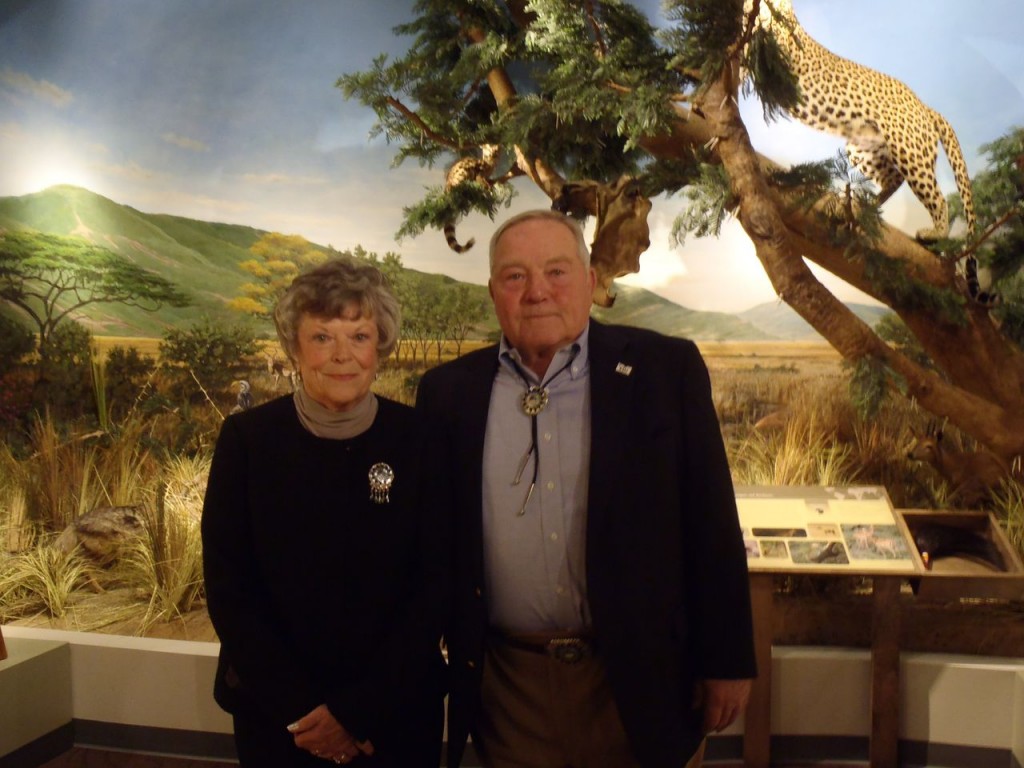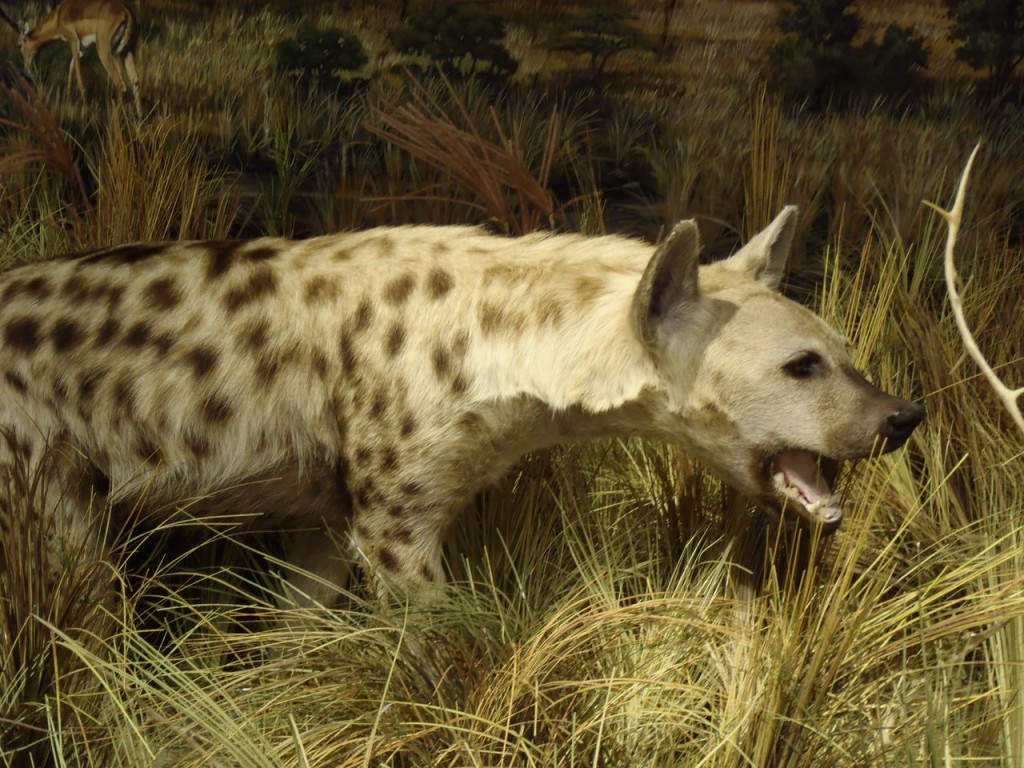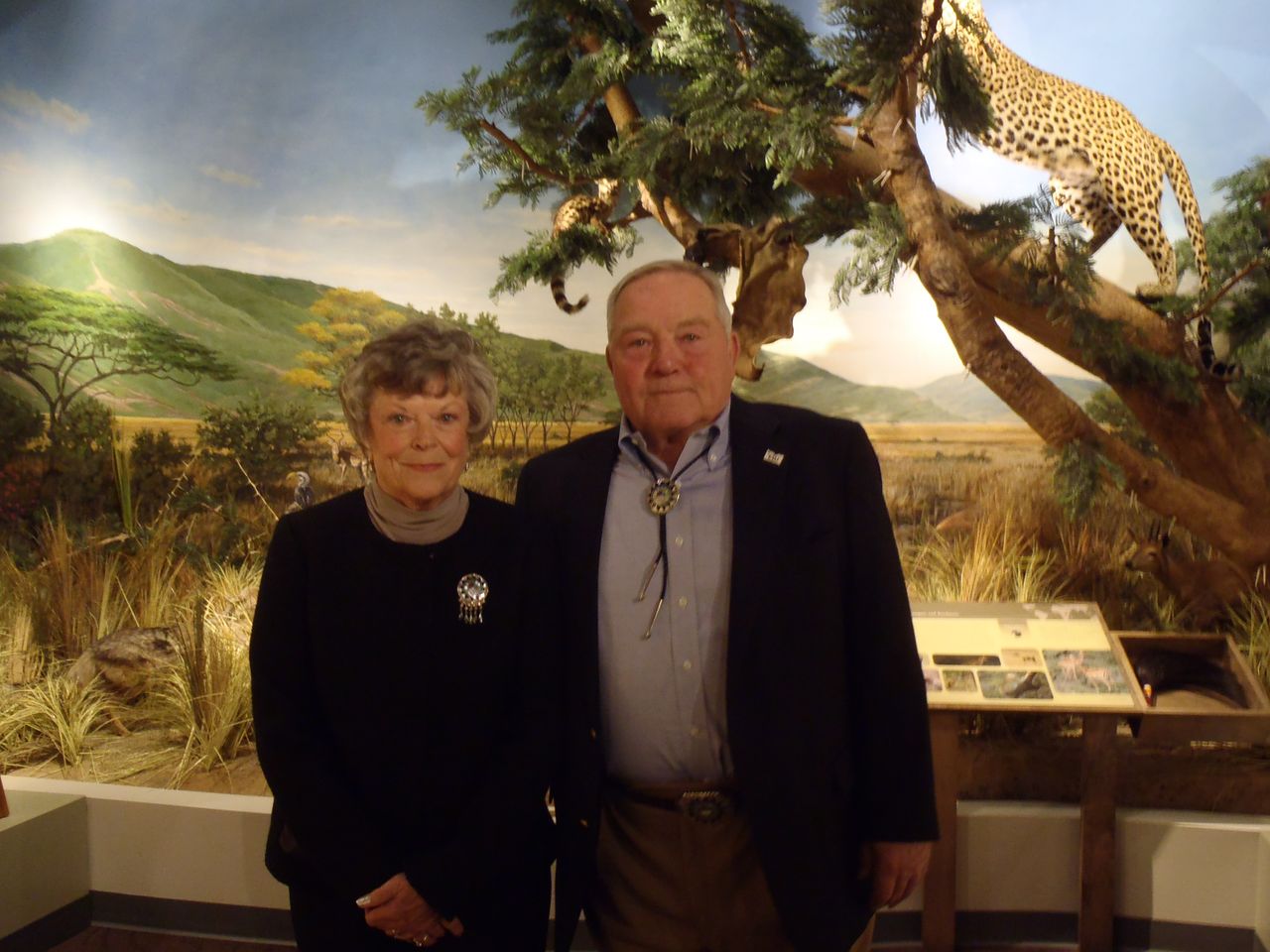

Photo Credit / Rebecca Jasulevicz
BY VALENTINA CAVAL
Editor- in -Chief
Things are starting to get pretty wild at ESU.
Keep your eyes open as you walk into the new Schisler Museum—located in the Science & Technology Center.
The museum houses a taxidermy exhibit of over 100 wildlife species that were all donated by alumni, Arthur and Fannie Schisler.
The museum had a soft opening on Friday, November 15 but will not be fully open to the public until this summer.
The Schislers were a part of ESU’s class of 1962.
Arthur is a funeral director at the Schisler funeral homes in the Lehigh Valley area.
“Historically, we find in our field a lot of guys have problems with either women or alcohol,” said Arthur. “She didn’t approve of the women, and my liver didn’t approve of the alcohol; I went hunting.”
Arthur Schisler has been hunting since 1971; in more recent years his wife joined him.
The Schislers have been long time donors to the university. Arthur is a former ESU football player, and has served on the ESU Foundation board of directors.
“I felt I had a debt to the university,” said Arthur. “It took me 55 years, but I think I made it.” He was referring to his donations in the museum’s wildlife exhibit.
“Establishing the wildlife museum at ESU was just an idea, and perhaps a dream,” said Fannie.
“It is our wish that the wildlife museum will be enjoyed by the young and the young at heart for generations to come.”
The first letter that began the discussion of what today is the Schisler museum was sent out in 1986.
It was just four to five years ago that regular discussions were held on the project.
The actual construction did not begin until this past summer.
The museum, which includes 2,400 square feet, is divided into five sections : Arctic, Boreal, Western, Eastern, and African.
The collection features 31 big game animals, and all species of deer found in North America.
The animals include a polar bear, a deer room, a cape buffalo, and a black bear.
Arthur is one of few to have a complete collection of big game animals. “ I want people to see the beauty of the creatures of our world,” he said.

Photo Credit / Rebecca Jasulevicz
As one can imagine, it took a lot of hands in making the Schislers’ dream come true.
“It took efforts from the entire ESU community, “ said VP of Financing, Ken Long. “ It was a university wide collaboration.”
The university hired professional constructors from the General Explus in Dallas, Virginia.
The two exhibit constructors for the project were Luke Minter, and Ron Arps. John Speacht was the site supervisor and carpenter.
The taxidermist, Setven Micio was said to have steered the whole operation. Mike Rosado was the mural artist of the exhibits. “It was a huge labor of love,” said Rosado. Christine Langlois was the project manager.
“There was a commitment on behalf of the Schislers, the University, and the ESU Foundation,” said President of the ESU Foundation, Frank Falso.
Students and professors both also played a part in completing the project.
ESU students, Megan Napoli, Chris Hauer, Liz McGovern, Amber Trunfio, Stephen Kloiber and Jessie Wagenhoffer were the students who helped with troubleshooting, identifying animals, cataloging specimen, installing the insect exhibit, installing the African exhibit, and some of the painting.
Professors Terry Master and Howard Whidden worked as curators. Professor of Biology, Matt Wallace, worked with the insect collection, and Professor James Hunt worked with the Aquarium.
“These exhibits are as good as anything in New York,” said Professor of Biology, Terry Master.
“We want to show students the exhibit, and try to incorporate national, history and educational value,” said Howard Whidden.
The museum is predicted to open to the public at the end of July. The University plans to develop programs for tours for both high school, and elementary education students.
They are working on pursing endowments and working with the foundation for educational grants to avoid any financial problems.
“We, the students, are excited about the opening of this museum,” said Vice President of Student Senate, Kwaku Adjei-Boyhen. “just like ‘Oliver Twist,’ we simply ask for more.”
The museum will also display an aquarium, and an insect collection that were not a part of the Schislers’ donation.
“This was one of the most fabulous gifts to the Poconos,” said ESU President, Marcia Welsh. “Thanks to the collaboration of so many, this incredible gift has become a reality.”
Email Valentina at:
vc7521@live.esu.edu

